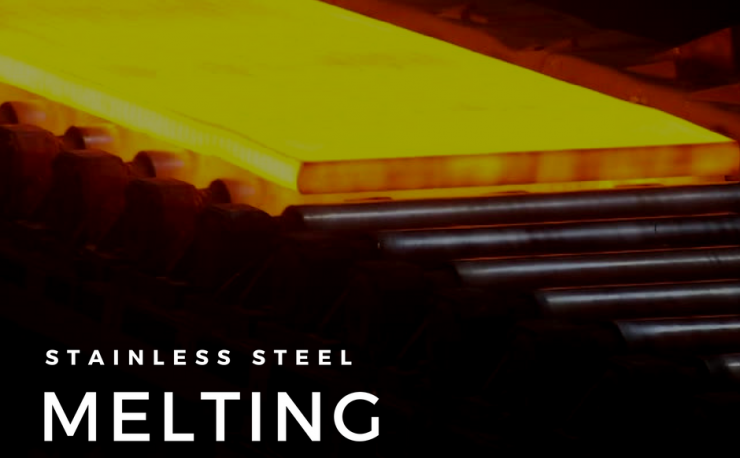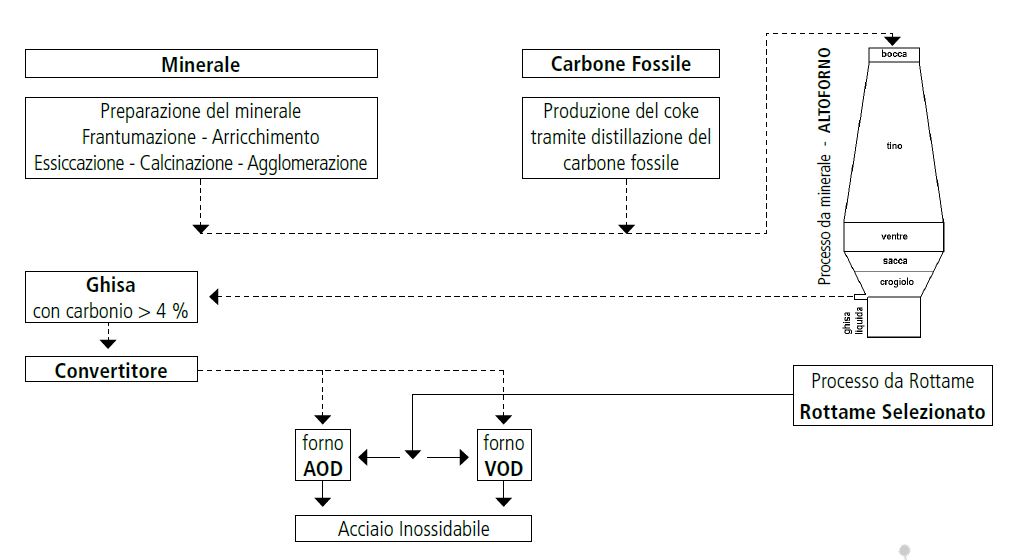
Stainless Steel Melting Processes
The first materials able to withstand the aggressive action of the acids were discovered in 1821, thanks to the mixing and the merger of oxides of iron and chromium.
An allusion to the history.
Initially, this alloy contained a percentage of chromium of about 1.5 and high carbon values. Only at the end of ‘800 (with the introduction of the Bessemer’s, Martin’s and Martin-Siemens’s ovens) it was possible to make an industrial-level production of carbon-chromium steels.
In the early ‘ 900, instead, as the:
- Martensitics stainless steels about 13% of chromium
- Ferritics stainless steels about 17% of chromium (with level of carbon from 0,12% to 1%)
- Austenitics stainless steels with alloys of iron-chromium-nickel
Process from mineral. How does it happen?
- The cast iron with 4-6% carbon is obtained by using the blast furnace
- Still molten cast iron is passed to the converter, so as to reduce the phosphorus, sulfur, carbon, silicon content and every other element more iron rusting
- To complete basic slag consists in the addition of iron-chromium and then processing into metal chrome (very close to the chemical analysis of stainless steel)
- This liquid is aged AOD or VOD systems and oxidized (vacuum) thus lowering carbon until the desired percentage
- Here you make the development of chemical analysis and by adding corrections (e.g. CR, Ni, Mo, Ti, Cu etc..) you get to the final percentages.

Process for scrap. A dip before 1960..
This system required lengthy processing times, besides an expenditure of electricity.
- After the merger of common scrap (with the use of an electric furnace) were paid in the ferroalloys (ferrochromium) bringing the chromium content to about 12%
- The 3 electrodes present released an amount of extremely high carbon.
- The next step involved the use of scrap steels melted under high temperature with reduction always from ferr (thanks to the technique that called secondary metallurgy off oven)
Only after 1960, the advent of AOD process and VOD enabled an improvement of production efficiency.
- AOD: Argon – Oxygen – Decarburization
- VOD: Vacuum – Oxygen – Decarburization.
Come to our Inoxmare web shop! Submit your orders and quotations with one click. Registered. Even from your mobile phone. Check out our discounts, availability and prices. Over 20,000 stainless steel items to choose from.
Click here



